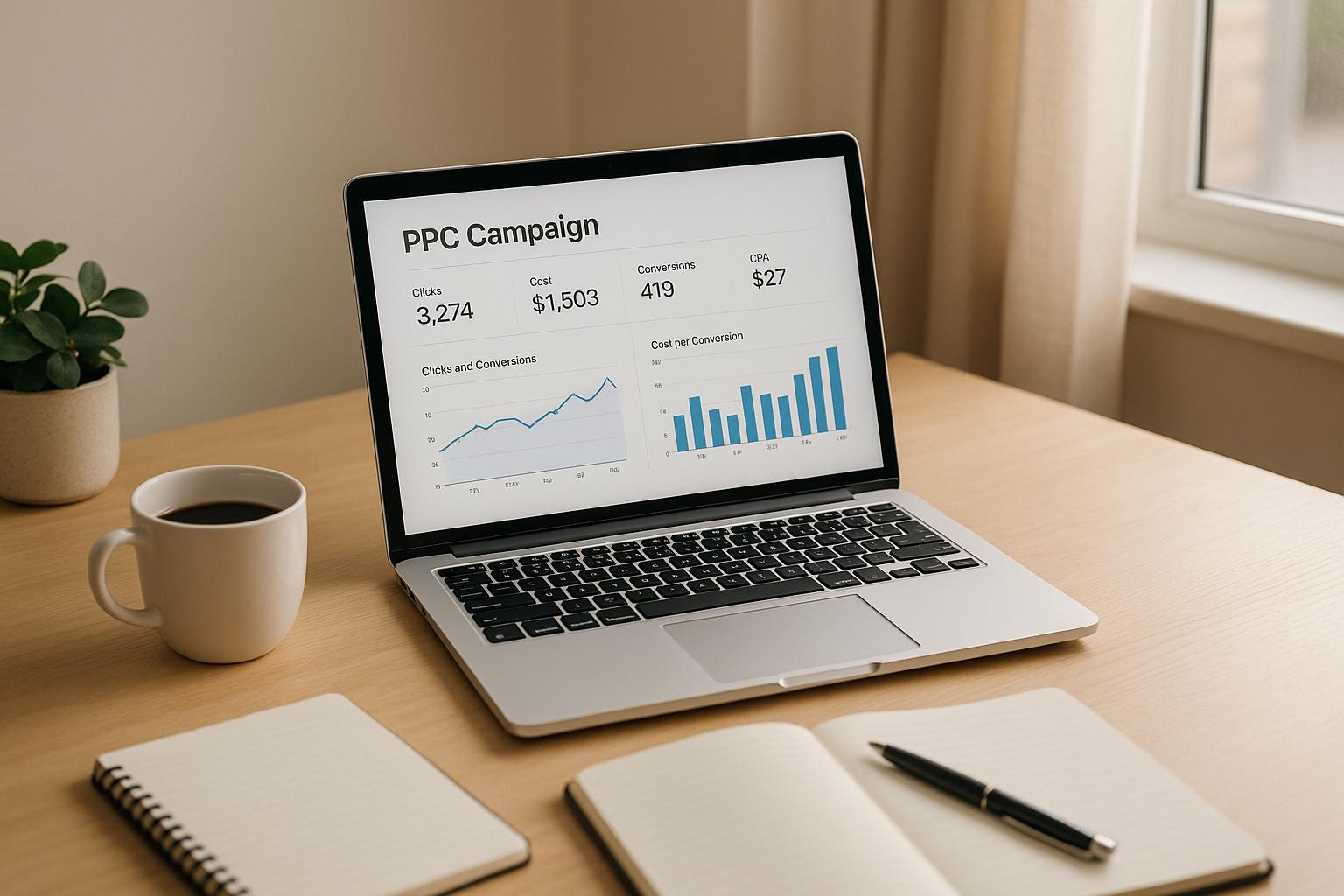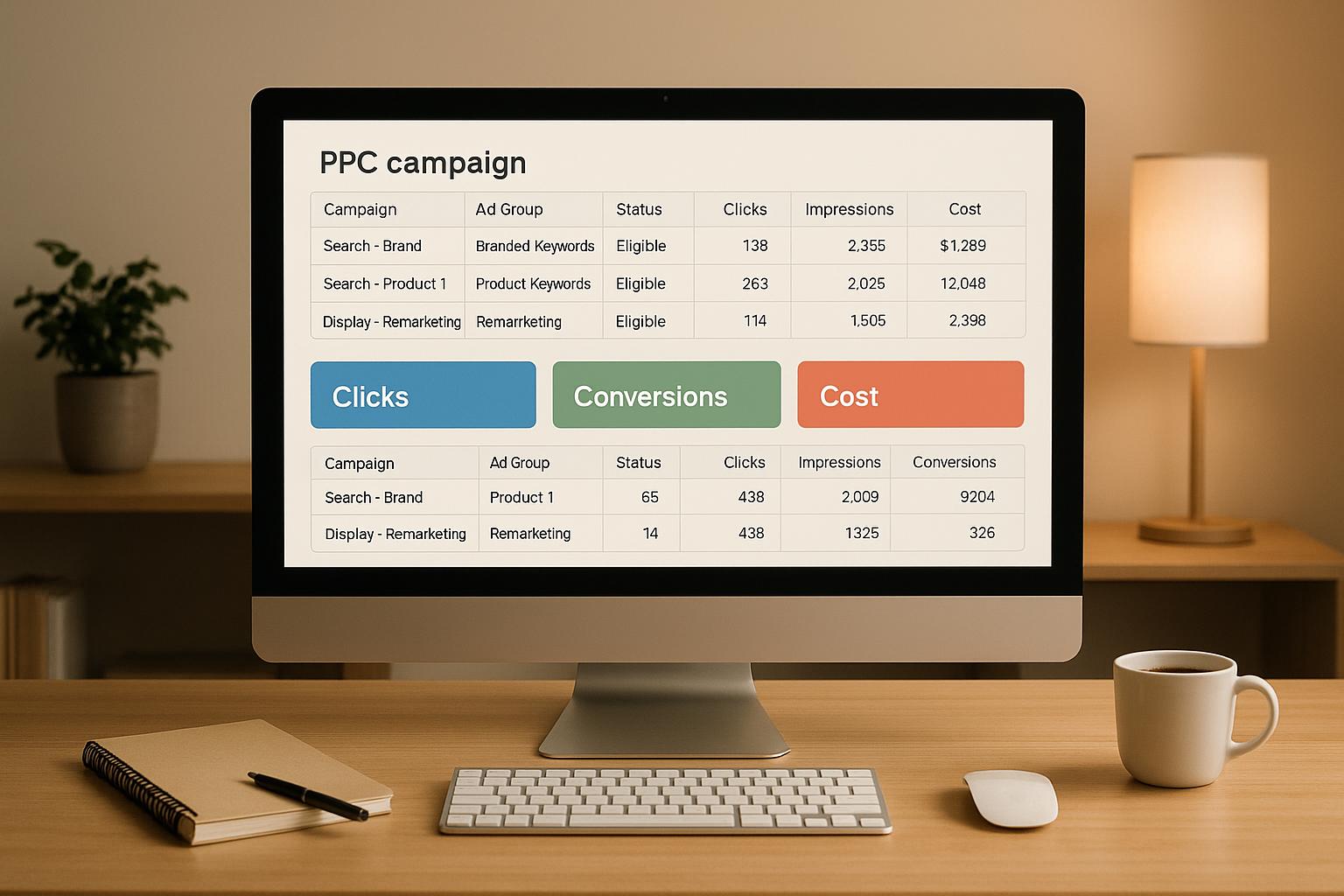Segmenting your audience in Google Ads allows you to tailor ads for specific groups, improving engagement and driving conversions. Here’s how you can use segmentation effectively:
- Demographics: Target by age, location, income, and parental status to test which groups respond best.
- Interests: Combine user interests (e.g., sustainable living) with behaviors like recent purchases for precise targeting.
- Behaviors: Focus on in-market audiences actively searching for products or services.
- Devices: Optimize ads for mobile, desktop, or tablet users based on their browsing habits.
- Timing: Schedule ads when your audience is most active to maximize engagement.
Google Ads Audience Targeting: The Complete Guide

1. Demographics
Break down your audience into detailed groups by combining factors like age, location, and income. For instance, focus on young professionals aged 25-34 in metro areas with higher incomes to evaluate how effective your messaging is.
Use A/B testing to compare these demographic combinations and see which groups respond best. You can also add layers like parental status to analyze how ads perform for parents versus non-parents within the same demographic.
| Demographic Layer | Primary Targeting | Secondary Targeting |
|---|---|---|
| Age | 25-34 years | 35-44 years |
| Location | Major metro areas | Suburban areas |
| Income | Top 10% income bracket | Top 25% income bracket |
| Parental Status | Parents | Non-parents |
This table helps you organize ad variations and track key metrics like click-through rates (CTR) and conversions. Tools like Google Ads Audience Insights can further analyze audience behavior and engagement trends, giving you a clearer picture of what works.
Demographics are a great starting point, but adding interests to the mix takes personalization to the next level.
2. Interests
Focus on targeting users with specific interest combinations to gain deeper insights during A/B testing. Experimenting with different combinations helps identify which audience segments drive the most engagement and conversions, allowing you to fine-tune your strategy.
Layered interest targeting pairs primary interests with related behaviors. For example, you might target people interested in sustainable living who have also recently purchased eco-friendly products. This approach ensures your ads are seen by a highly relevant audience.
To organize and test these combinations effectively, you can use a table like this:
| Interest Layer | Primary Target | Secondary Target |
|---|---|---|
| Core Interest | Sustainable living enthusiasts | Environmental activism |
| Shopping Behavior | Recent eco-friendly purchases | Green product research |
| Content Engagement | Sustainability blog readers | Climate change news followers |
This table helps you mix and match core interests, shopping habits, and content engagement to refine your targeting. Use tools like Google Ads' Audience Insights to track engagement patterns and find the combinations that deliver the best results. You can also explore resources like the Top PPC Marketing Directory for tools and services to improve your interest-based targeting.
sbb-itb-89b8f36
3. Behaviors
In-market audience targeting zeroes in on users actively looking to make a purchase, like those researching or comparing products. This approach uses behavioral signals from recent online activities to identify potential customers.
Here’s how to make in-market audience targeting work in your A/B tests:
| Testing Component | Primary Focus | Secondary Focus |
|---|---|---|
| Purchase Intent | Product searches | Product comparisons |
| Research Stage | Category browsing | Brand research |
| Time Sensitivity | 7-14 days | 15-30 days |
This method works well because it targets users showing clear intent. For instance, if you sell eco-friendly products, you could focus on users who recently searched for sustainable options (primary behavior) and also explored environmental topics (secondary behavior).
Platforms like Google Experiments can help you test these behavioral segments effectively [1][2]. By isolating specific actions, A/B testing can pinpoint which intent-driven groups are most likely to convert, allowing you to refine your strategy.
While understanding user behaviors is key, fine-tuning how and where they interact with your brand is just as important.
4. Devices and Platforms
Targeting by device type in Google Ads is a smart way to reach specific audience segments, especially since mobile users now dominate digital ad interactions.
Optimizing for Devices with A/B Testing
This approach tailors user experiences to fit device-specific behaviors. Testing across devices can reveal differences in conversion rates - sometimes as much as 30% - depending on the device being used.
| Device Type | User Focus | Optimization Approach |
|---|---|---|
| Mobile | Location-based offers | Proximity-driven promotions |
| Desktop | Detailed product info | In-depth comparisons |
| Tablet | Rich media content | Interactive ad formats |
By segmenting your audience based on the device they use, you can create ads that resonate with their unique behavior. For example, mobile users might respond better to location-based deals, while desktop users often prefer detailed product comparisons.
Running A/B tests across mobile, desktop, and tablet platforms helps you understand how user behavior varies. Pay close attention to metrics like click-through rates (CTR) and cost per conversion to fine-tune your strategy for each device type.
While devices shape how users interact with ads, the timing of your campaigns is just as crucial for grabbing attention and driving results.
5. Time-Based Segmentation
Timing plays a key role in determining when users are most likely to engage with ads. While devices influence how users interact, timing ensures your message reaches them at the right moment.
Delivering ads strategically, based on when your audience is most active, can lead to better results. According to Google Ads experiments, optimizing ad delivery during peak activity hours can boost conversion rates by 15-25%.
| Time Period | Target Audience & Strategy |
|---|---|
| Morning (6-9 AM) | Commuters - focus on mobile-friendly ads with quick-action CTAs |
| Midday (11 AM-2 PM) | Lunch Break Browsers - promote flash deals and limited-time offers |
| Evening (7-10 PM) | Prime Time Shoppers - use higher bids and full-funnel campaigns |
Testing how ads perform in different time slots through A/B experiments can help uncover the best times for conversions. This data allows for smarter scheduling decisions, ensuring your ads are shown when they’re most effective.
Take advantage of Google Ads' scheduling tools to fine-tune bid adjustments during key periods. For example, increase bids by 20% during your top-performing hours and reduce them during slower times.
"Time-based segmentation can be combined with other segmentation methods to create more targeted and effective campaigns. For example, targeting users aged 25-34 who are interested in fitness during early morning hours can increase the campaign's relevance and effectiveness."
Don’t forget to align your ad schedule with local time zones for each target region. Combining time-based segmentation with device targeting - like showing mobile ads to early morning commuters - can further enhance performance.
To simplify this process, tools from the Top PPC Marketing Directory can identify peak times and automate bid adjustments for you.
Conclusion
Using A/B testing with audience segmentation can greatly improve the performance of Google Ads campaigns. By tailoring campaigns to specific traits like demographics, behaviors, and timing, advertisers can create ads that truly connect with their audience. For instance, scheduling ads during peak engagement times has been shown to increase conversion rates by as much as 25%.
"A/B testing thrives on clear strategies that eliminate guesswork and deliver actionable insights."
To get the most out of audience segmentation, focus on these core areas:
| Focus Area | Implementation Strategy | Expected Outcome |
|---|---|---|
| Testing Approach | Develop clear hypotheses and goals | Make informed decisions |
| Sample Size | Ensure a large enough audience | Gather reliable insights |
| Optimization Cycle | Regularly review performance | Drive consistent progress |
Helpful resources, like the Top PPC Marketing Directory, offer tools to simplify segmentation and testing. These solutions can assist with bid adjustments, audience insights, and performance tracking, making it easier to implement and refine targeting strategies.
Segmentation isn’t a one-time effort - it requires ongoing analysis and updates to stay aligned with shifting audience behaviors and market trends. By consistently reviewing and fine-tuning your approach, Google Ads campaigns can deliver stronger returns and play a key role in your overall marketing success.


